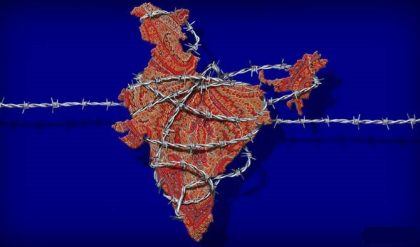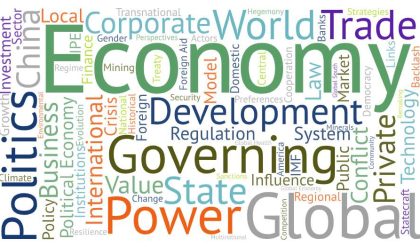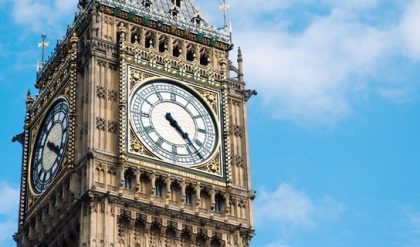What ties politics, public choice, and political economy together is the centrality of heterogeneity of interests. Were there no heterogeneity of preferences over outcomes, there would be no need for a mechanism to aggregate individual preferences into a collective choice. Similarly, were there no conflicts of interests whatsoever, the choice of economic policy would be that of the social planner maximizing the utility of the representative individual. Remember the quote from Atkinson and Stiglitz 1980 Ž Ž . in footnote 6. It is heterogeneity of interests that is the basis of the field . of political economy. At this point, one may argue that heterogeneity of interests is also central to much of economics. Markets are driven by heterogeneity as well, heterogeneity of tastes, of endowments, and of expectations.
Why not therefore argue that heterogeneity is the basis not only of the field of political economy, but also of market economics itself? The argument on the importance of heterogeneity for political economy may be summarized in two propositions. First, heterogeneity or conflict of interests is necessary for there to be political constraints. Second, the effect of politics on economics follows from the mechanisms by which these conflicts are resolved. The first point is clearheterogeneity is a necessary condition. It can be read as saying only that without heterogeneity, there would be nothing to study. It is the second which is really our focus, and, to my mind, defines political economy. Heterogeneity is also necessary for there to be markets, but heterogeneity of interests plays out quite differently when addressed through the market than through the political process. For example, the effect of heterogeneity of abilities on distribution of income mediated simply through the market will be quite different than the income distribution which would result when individuals can lobby for transfers, based on their endowed abilities.
How much different will depend on the political mechanism by which tax-and-transfer policy is decided.8 Moreover, there are numerous issues where individuals have a heterogeneity of interests where the market mechanism either cannot be used or simply is not used to determine outcomes, the political choice mechanism being used instead. Given the necessity of conflict of interests for there to be a political economy problem, one is led to ask: what are important types of heterogeneity for political economy? There are many, which we find useful to separate into two basic classes, giving rise to two crucial types of conflict of interests. The first conflict reflects underlying heterogeneity of actors ‘‘coming into’’ the political arena, implying they have different policy preferences. There are a number of reasons.
They may simply have different tastes over goods, broadly defined, or different relative factor endowments. They may find themselves in different situations not easily summarized in terms of tastes or endowments that lead them to prefer different policies. Or, they may just differ in how they think the world works, and hence what policies would best achieve a given aim.
There is another central type of heterogeneity. Even when political-economic actors have the same ‘‘primitives’’endowments, preferences, etc. there will generally still be a conflict of interests. Actors may all equally value a good, but there is conflict if its distribution if it is private or the Ž . distribution of the costs of providing it if it is public is determined by a Ž . collective choice. Economic policies generally have distributional implications. Therefore, when a policy does or Ž . can have distributional consequences, self-interested ‘‘representative’’ agents will be in conflict over distribution.
This includes the rents that office-holding may provide to those in office, whether these are pecuniary benefits or simply the ‘‘ego rents’’ associated with holding office. Since ‘‘distribution’’ can also refer to conflicts arising from ex-ante heterogeneity of factor endowments, we use the general term ex-post heterogeneity for this type of heterogeneity. These two concepts of heterogeneity will appear in various forms throughout the book.
One should note that these are not by any means mutually exclusive. In discussions of supply of a public good, for example, there may be conflict over the importance of the public good relative to other expenditures, reflecting ex-ante heterogeneity, as well as conflict over who should bear the cost of supplying the public good, which is ex-post heterogeneity. To take another example, conflict over the size of income assistance programs in the budget combines distribution of a private good whose burden may be seen as a public good, not to mention the ideological conflict over the proper role of the state in providing income transfers.






Comments are closed.